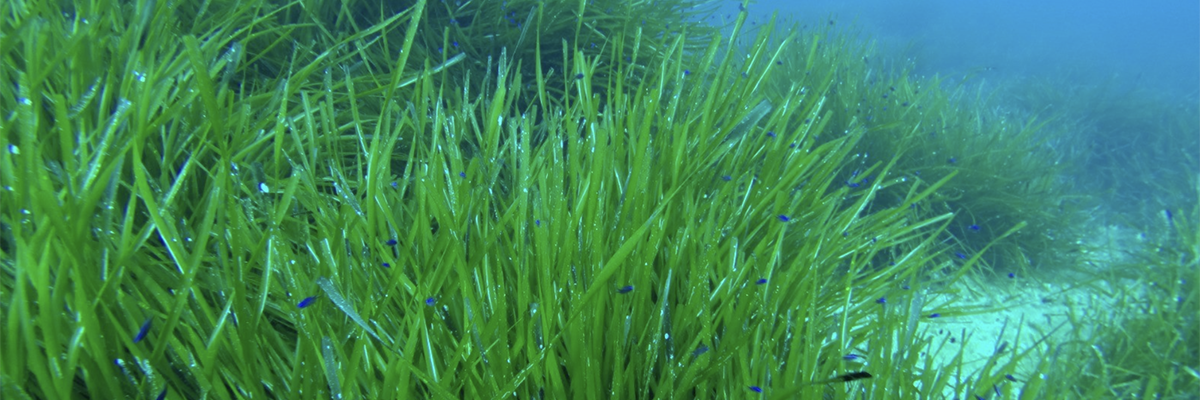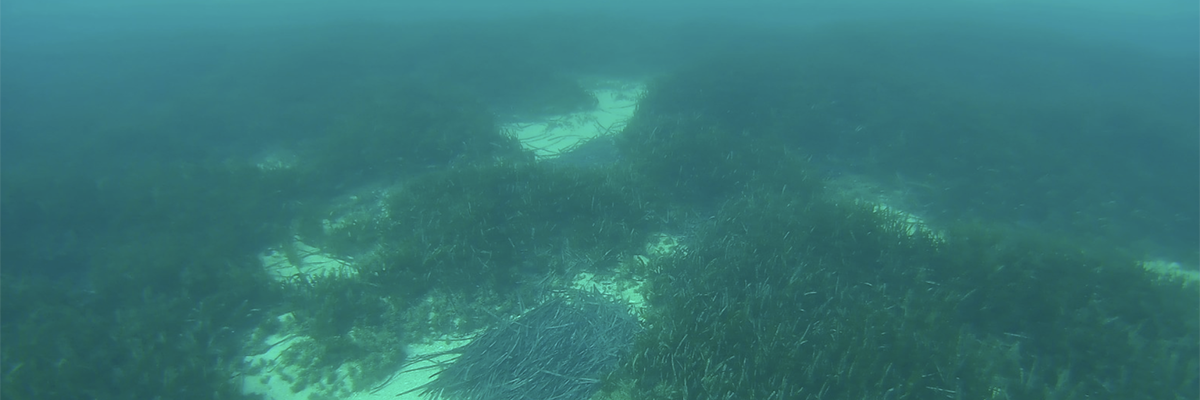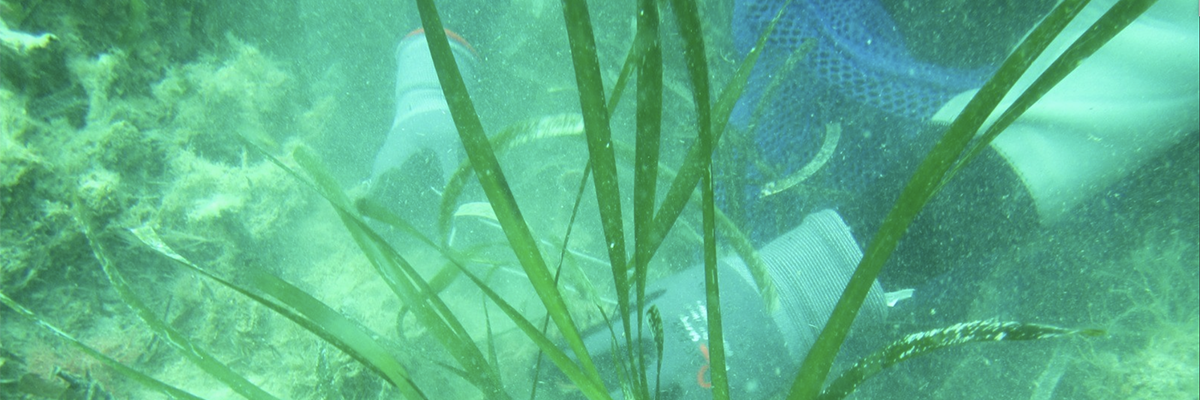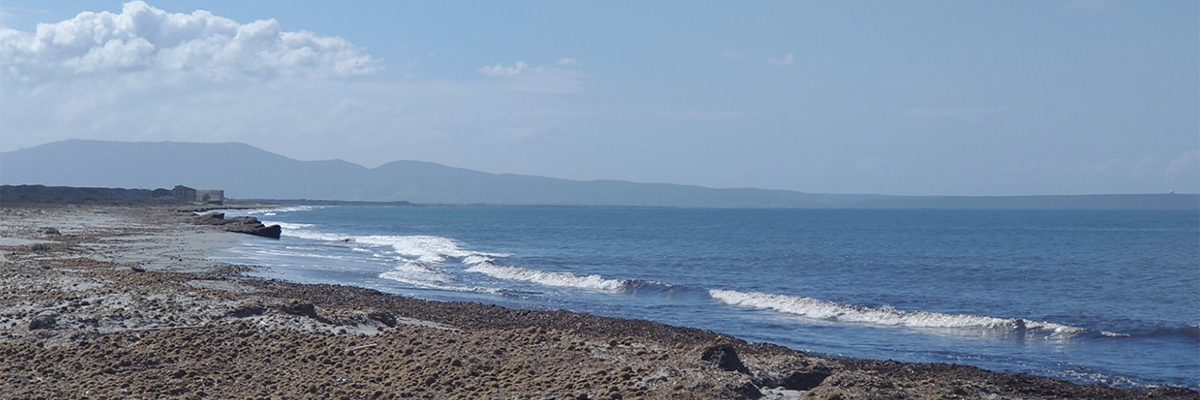This summer, there was a lot of talk about Posidonia oceanica in Sardinia and how it could be endangered by human activities such as illegal fishing and boating. For some time now, MEDSEA has been committed to safeguarding the meadows of Posidonia oceanica with "A Marine Forest to Save the Planet", which are essential for a range of benefits, from regulating sea temperatures to its ability to oxygenate the sea, from its efficiency in sequestering carbon, to its ability to protect biodiversity and be home to numerous plant and animal species, such as fish, especially in their juvenile stages. Not least is the significant role of these meadows in slowing down coastal erosion, which is also due to the effects of climate change.
That's why when the cover of these essential meadows is destroyed or simply damaged, the harm can be irreversible and incalculable. Posidonia oceanica, endemic to the Mediterranean, is a very delicate plant that grows very slowly, only a few centimeters a year. By damaging - even inadvertently and unintentionally these meadows - for example, with wild anchoring - we compromise what nature has created over centuries.

To better explain the topic, refute any doubts, and debunk some myths, we have collected some of your most frequent observations:
Why Posidonia oceanica is a protected species?
Posidonia oceanica is an endemic marine plant of the Mediterranean Sea - not a seaweed - equipped with stems, roots, leaves, and even reproductive organs, which is why it is defined as a "higher" plant (Phanerogama). It forms extensive underwater meadows, performing numerous ecological functions such as oxygen production, coastal line protection, providing habitat for marine fauna, and contributing to carbon sequestration. Its ecological importance has led to its protection through various regulations, including the Barcelona Convention, national legislation of Mediterranean countries, and the European Natura 2000 network. The main threats to this plant include boat anchoring, pollution, trawling, and coastal urbanisation.
Where can we find it?
We can find it from the first few meters of depth from the coastline up to 30-40 meters.
Can anchors really uproot marine plants like posidonia?
Yes, boat anchors and chains can physically damage posidonia meadows, a crucial marine plant for the Mediterranean coastal ecosystems. When an anchor is dropped onto the seabed where the meadow is present, it can tear and uproot the leaves, rhizomes, and roots of the posidonia. This physical damage can create "patches" or empty areas within the meadow, which can take years or even decades to regenerate due to the slow growth of posidonia.

So how should boats regulate themselves when they want to anchor in areas where posidonia is present?
Boats should follow certain guidelines and best practices when anchoring in areas with posidonia. Many protected marine areas or coastal zones have specific anchoring regulations to protect the marine environment, but even where it isn't explicitly stated, boaters can actively contribute to conserving these valuable meadows and enjoy the sea responsibly. For instance, they can directly visually inspect if the seabed presents a meadow or directly check underwater with a mask where they are anchoring, use buoy fields where available (for example, in Sinis, you can also register online at the buoy field with www.bluemooring.org). Being more informed about the benefits and importance of posidonia and sharing this information with other boaters can help promote sustainable anchoring practices.
Are there mappings of Posidonia meadows?
Yes, there are areas, particularly Protected Marine Areas, equipped with digital cartography containing information on posidonia meadows. For example, the Donia app. It's always good practice to check your boat itinerary to plan anchorages.
Is trawling (illegal) more harmful to the meadows than anchoring?
Both trawling and unregulated anchoring can have significant impacts on marine habitats if not managed correctly. While trawling can alter large areas of the seabed and negatively affect various species, careless anchoring can damage delicate habitats like posidonia meadows. Both activities, if not regulated and monitored, can lead to long-term damage in the marine environment.
To inhibit the effects of illegal trawling on seabeds that present priority species like posidonia (for example, in a Protected Marine Area or less than three miles from the area), it might be useful to adopt artificial defense systems like anti-trawling barriers positioned in the seabed. In 2023, MEDSEA, in collaboration with Flag Pescando Sardegna Centro Occidentale with the support of AMP Sinis, thanks to the reporting of local fishermen in previous years, positioned on the west coast in Sardinia - in the AMP of the Sinis Peninsula - about sixty deterrents, the first of this kind in Sardinia (SATURN project).
How to solve the "problem" of posidonia banks (also called “banquette”) that deposit on our beaches?
The presence of posidonia banks on beaches should not be considered a "problem", as posidonia plays a fundamental ecological role and its presence indicates a healthy marine ecosystem. The posidonia that settles on the beaches during certain weather conditions or marine currents is then subsequently removed by natural currents, and for this reason, it should never be removed.
Why protect posidonia when its leaves naturally detach and "pollute our beaches"?
The leaves that detach and settle on the beaches is a natural renewal process of the plant and should not be considered "pollution". As already explained, the leaves protect the beach and can help prevent erosion, acting as a natural barrier against wave action. Also, as they decompose, they release nutrients that can benefit other organisms on the beach.
Do you want to actively contribute to the reforestation of Posidonia oceanica meadows in Sardinia and throughout the Mediterranean? Support the MEDSEA campaign "A Marine Forest to Save the Planet".
Pics by Andrea Alvito / MEDSEA
Latest news

TransformAr Open Day in Marceddì: Marshes and Lagoons to Reimagine the Future
Natural Solutions to Adapt to Climate Change: Lagoons and Marshes. This topic was discussed during an immersive walk between the Marceddì Lagoon and the San Giovanni Marsh on Friday, July…

MEDSEA joined the Natural Heritage Interreg Euro-MED Mission in Rovinj for aligning in projects' Communication
MEDSEA stopped in Rovinj, Croatia, from June 26th to 27th, 2024, to participate in the Communication, Amplification and Policy activities of the Interreg Euro-MED Natural Heritage mission, which brings together the thematic projects…

DesirMED: Nature-Based Solutions for Climate Adaptation, Regional Comparison at the Mid-Year Assembl
The DesirMED project recently held its General Assembly online on June 19 and 20 to review the progress of activities in the first semester. This meeting saw the participation of all scientific partners and…

Waste Hunt at Sella del Diavolo to Protect our Cetaceans Friends
Last Saturday on June 15th, nearly a ton of waste was recovered both on land and at sea during the "Puliamo la Sella!" event in Cagliari. The collected items included…

Active Restoration of Posidonia oceanica: MEDSEA at the 2024 World Seagrass Conference in Naples
MEDSEA continues to lead in the active restoration of Posidonia oceanica, a crucial topic for the conservation of Mediterranean marine ecosystems. Recently, the guide "Guidelines for the Active Restoration of Posidonia oceanica"

TransformAr Open Day on July 5th 2024: Discovering Transformative Solutions for Climate Change at the Marceddì Lagoon
On July 5th, TransformAr presents itself to the public with a special Open Day. The European Horizon 2020 project, aimed at developing transformative solutions for climate change adaptation, invites curious minds and citizens…

Puliamo la Sella! 2024 dedicated to our cetacean friends, with WWF, returns to Cagliari on June 15, 2024
The coastal cleanup organized by the MEDSEA Foundation, Puliamo la Sella!, returns to Cagliari on June 15th 2024. This year's event, now in its sixth edition, will be a special…

Deep Dive: The Talk for World Oceans Day
World Oceans Day provided an opportunity to reaffirm the importance of acting now to protect one of our most precious assets: the marine and coastal ecosystem. The Coalitions of the…
First SEG Meeting of the BLUE4ALL Project: A Focus on Surveillance and Biodiversity Protection
On May 23, 2024, the inaugural SEG (Stakeholder Engagement Group) meeting for the BLUE4ALL Project was held at Casa Todde in Villasimius, with options for remote participation.

RICREA introduces itself in Lucca, working on updating the Contracts, and will also focus on the Blue Crab
River, lagoon, and water body contracts in general are an exceptional tool for sustainable and participative environmental management, essential for the protection of water resources and local biodiversity. However, there…

TransformAr: Climate Adaptation Pathways Finalized for the Fisheries and Agriculture Sector in Terralba
This week, a participatory workshop was held in Terralba as part of the TransformAr project to finalise the adaptation pathways developed with local operators, particularly in the fisheries, agriculture, and biodiversity sectors.

ARTEMIS, Partner Meeting in Marseille to Kick Off Activities
On May 15th and 16th, at the Plan Bleu headquarters in Marseille, the first in-person meeting of the ARTEMIS project was held since the kickoff in March. ARTEMIS is a project within the…

DEEP DIVE: The Alarming State of the Ocean – Inspiring Action and Searching for Solutions (Webinar)
In celebration of World Ocean Day, MEDSEA invites you to the online event "Deep Dive: The Alarming State of the Ocean", a detailed analysis of the challenges that oceans are…

Fire Monitoring Test successfully conducted in Santu Lussurgiu thanks to IoT Technologies
At the end of April, a major breakthrough in fire prevention technology was achieved in the forests of San Leonardo. Thanks to pre-fire detection sensors, an IoT (Internet of Things) technology developed and…

REST COAST, at the annual meeting in Groningen, demonstrates the effectiveness of natural restoration of aquatic systems
The standstill of the Nature Restoration Law, the European law on nature restoration, stalled in its final approval phase in the Council due to the hesitations of some Member States, has…

TransformAr makes a stop in Finland for the sixth Consortium Meeting
In mid-April, the sixth Consortium meeting of the H2020 TransformAr Project was held in Lappeenranta, recognized as the Climate Capital of Finland. This city truly exemplifies sustainability, with 100% of waste recycled and all…
- 1
- 2
- 3
- 4


